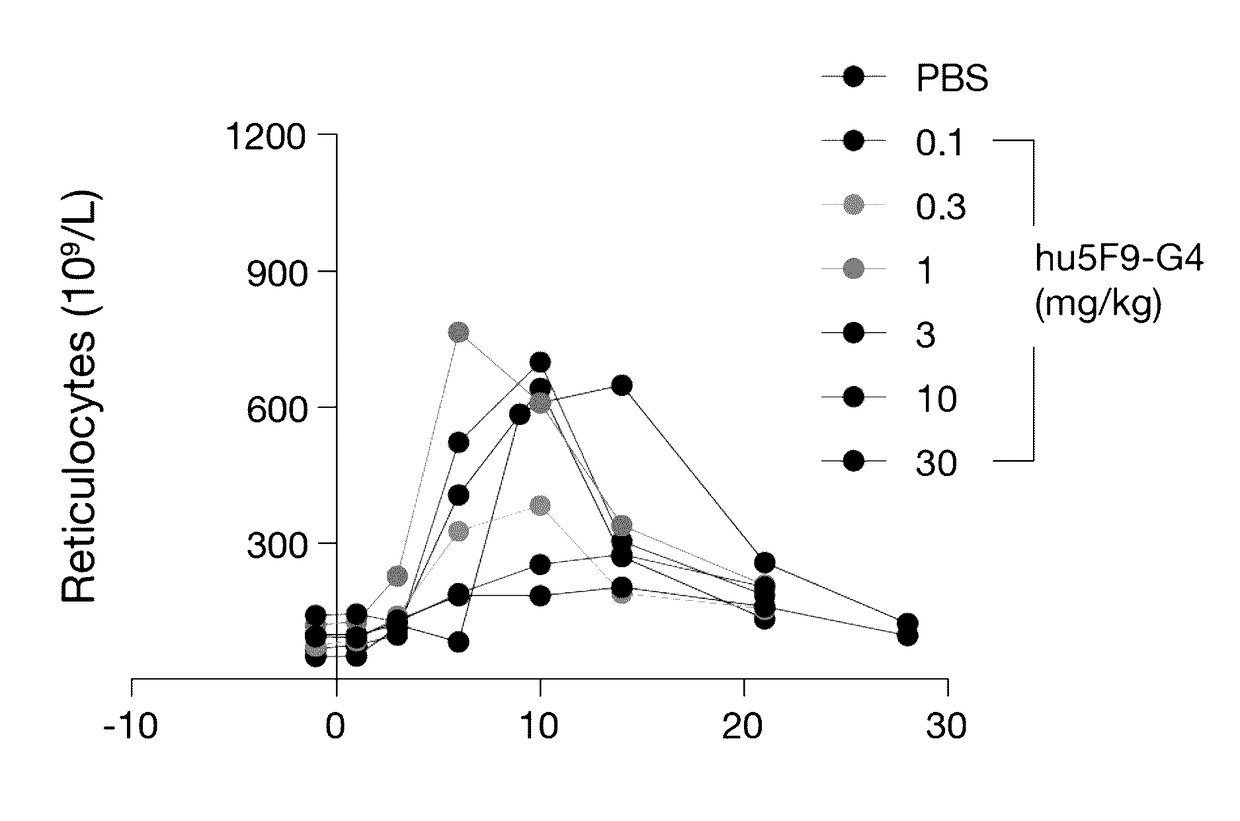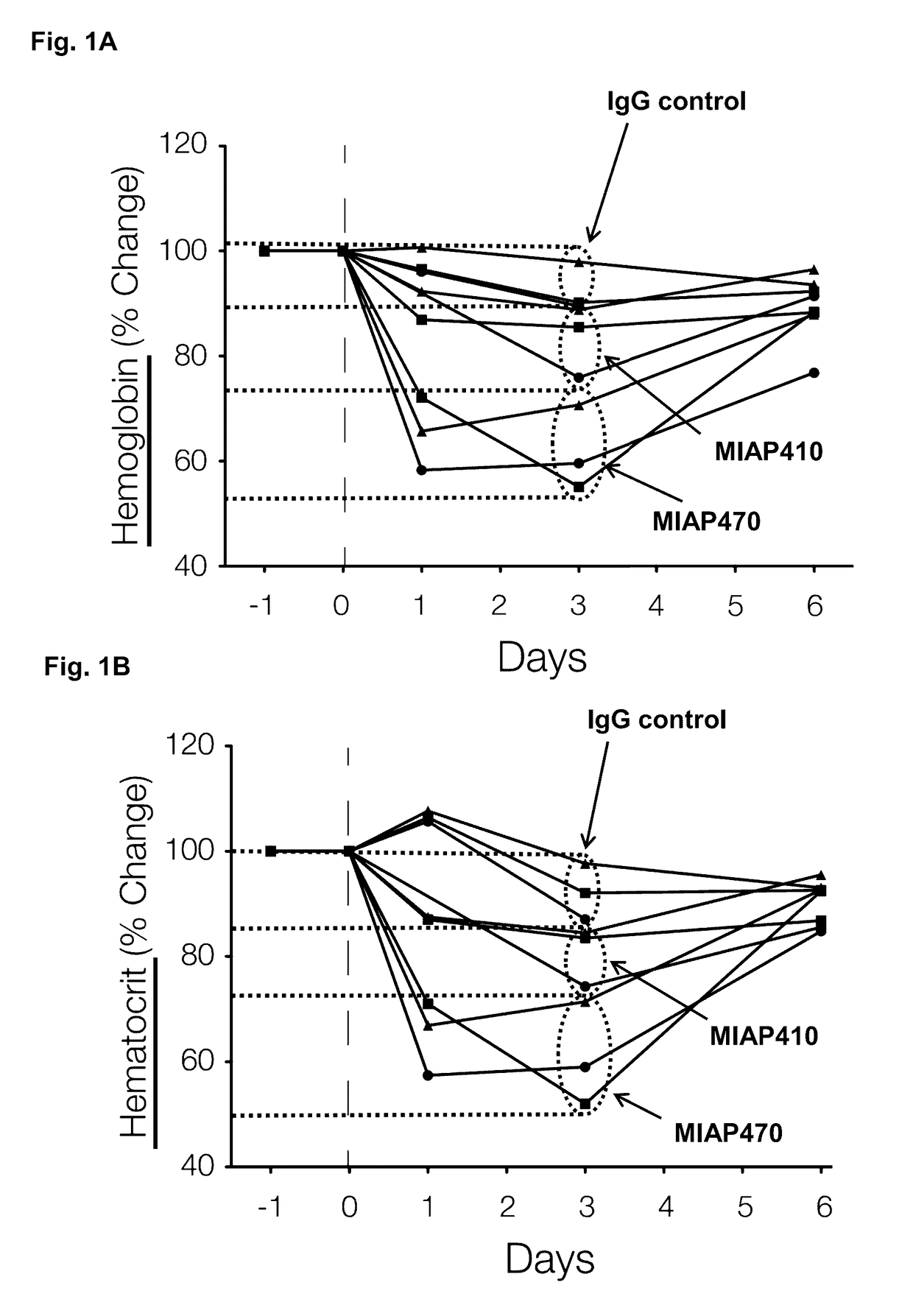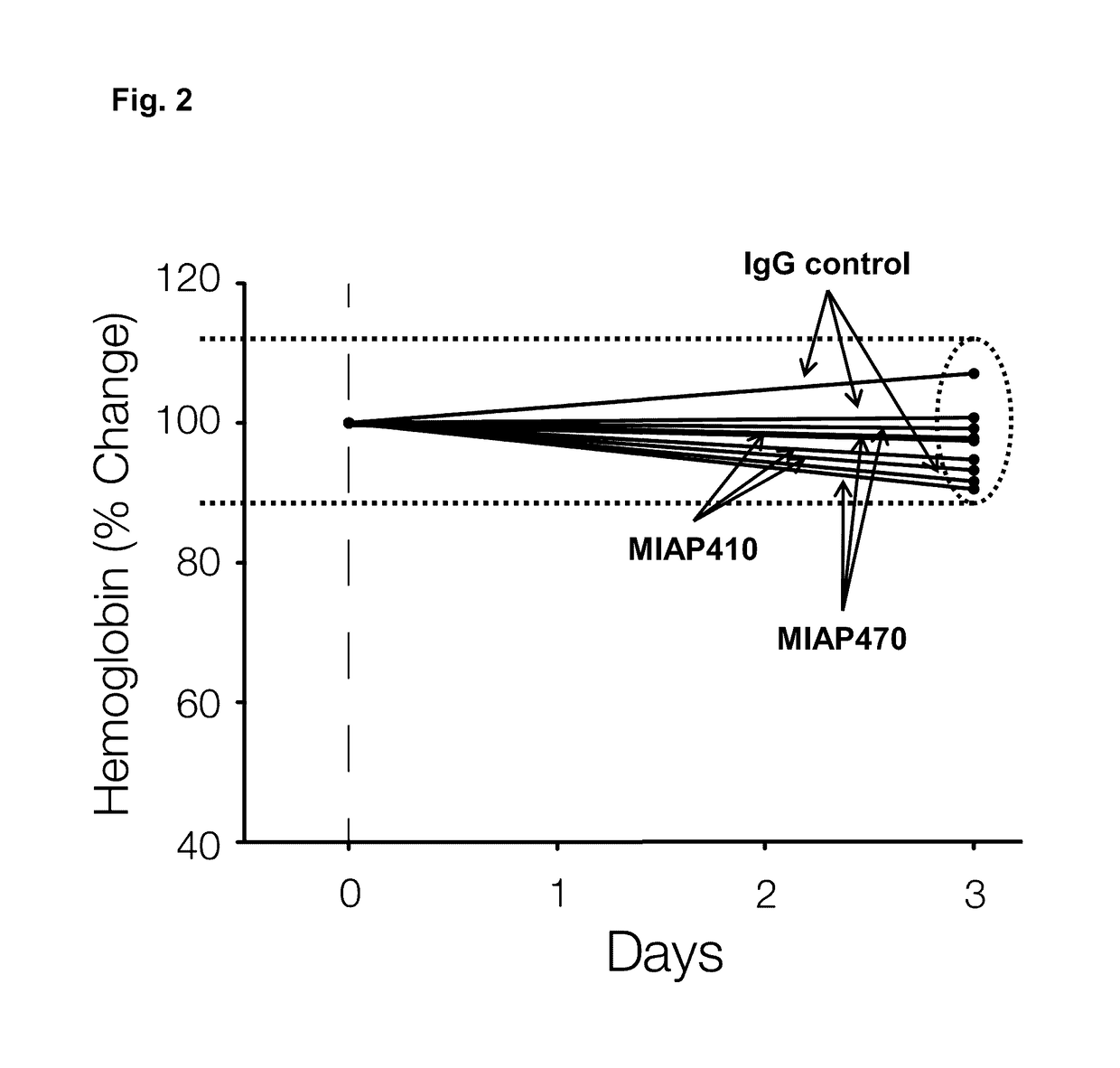Methods for achieving therapeutically effective doses of anti-CD47 agents for treating cancer
a technology of anticd47 and cancer, which is applied in the direction of antibody medical ingredients, drug compositions, peptide/protein ingredients, etc., can solve the problems of increased phagocytosis of the target cell, loss of erythrocytes (rbcs), and anemia, and achieve the effect of reducing toxicity
- Summary
- Abstract
- Description
- Claims
- Application Information
AI Technical Summary
Benefits of technology
Problems solved by technology
Method used
Image
Examples
example 1
Single Injection of Anti-CD47 Antibodies in Wild Type Mice
[0121]A single 250 μg IP injection of MIAP410 (IgG1 isotype) or MIAP470 (IgG2a isotype) was administered to wild type mice. This antibody dose is roughly equivalent to a 10 mg / kg dose. Blood was collected from retro-orbital plexus and CBC analysis was performed on HemaTrue hematology analyzer 1, 3, and 6 days after antibody injection. The percent change in hematocrit (HCT) and RBC values are shown in FIG. 1. All anti-CD47 mAb treated mice developed anemia, the nadir of which occurred about 3 days after injection. The MIAP470 caused a more significant anemia, which is likely due to differential FcR mediated effects caused by the IgG1 and IgG2a isotypes.
Single Injection of Anti-CD47 Antibodies in CD47− / − Mice
[0122]CD47− / − mice were acquired from Jackson Laboratory and injected IP with 250 μg of control mouse IgG, MIAP410, or MIAP470. Blood was collected and analyzed 72 hours after mAb injection. No anemia was observed in any of...
example 2
Verification of Dosing Strategy in Non-Human Primates (NHPs)
[0124]The Hu5F9-G4 anti-CD47antibody (and its parent 5F9) binds human CD47, but does not bind mouse CD47. In order to identify an appropriate toxicology species, the sequence of macaque (cynomolgus) non-human primate (NHP) CD47 was aligned with human CD47 and it was determined that the two sequences contain only 3 amino acid differences in the extracellular domain (FIG. 4). All 3 non-conserved amino acids are located outside of the SIRP-alpha interacting region as has been determined by published X-ray crystal structures.
[0125]A cynomolgus NHP CD47-Fc fusion protein was generated and it was determined that Hu5F9-G4 does in fact bind to cynomolgus NHP CD47 (FIG. 5). Surface plasmon resonance (SPR) affinity measurements were further conducted by using Biacore. The results show that Hu5F9-G4 binds cynomolgus CD47 with an affinity comparable to that of human CD47 (FIG. 6).
[0126]In addition, flow cytometry and immunofluorescence...
example 3
Therapeutic Efficacy of Anti-CD47 Antibodies in Xenotransplantation Assays
[0131]We previously reported preclinical evidence that a blocking anti-CD47 monoclonal antibody (clone B6H12, mouse IgG1) was effective at inhibiting the growth and metastasis of solid tumors, including breast, bladder, colon, ovarian, glioblastoma, leiomyosarcoma, and head & neck squamous cell carcinoma (PMID: 22451913, 22451919). Anti-CD47 monoclonal antibodies also caused similar inhibition of hematologic tumor growth (PMID: 21177380, 20813259, 19632179, 19632178). We have now confirmed that humanized antibodies (e.g., the humanized anti-CD47 antibody used in the studies above, hu5F9-G4) is also highly effective at inhibiting solid tumor growth and eliminating metastases (FIG. 11).
[0132]To investigate the efficacy of hu5F9-G4 on solid tumors, a human bladder cancer cell line (639V) was subcutaneously transplanted into immunodeficient mice. Tumor bearing mice were treated with PBS or hu5F9-G4. Due to tumor b...
PUM
| Property | Measurement | Unit |
|---|---|---|
| dissociation constant | aaaaa | aaaaa |
| dissociation constant | aaaaa | aaaaa |
| dissociation constant | aaaaa | aaaaa |
Abstract
Description
Claims
Application Information
 Login to View More
Login to View More - R&D
- Intellectual Property
- Life Sciences
- Materials
- Tech Scout
- Unparalleled Data Quality
- Higher Quality Content
- 60% Fewer Hallucinations
Browse by: Latest US Patents, China's latest patents, Technical Efficacy Thesaurus, Application Domain, Technology Topic, Popular Technical Reports.
© 2025 PatSnap. All rights reserved.Legal|Privacy policy|Modern Slavery Act Transparency Statement|Sitemap|About US| Contact US: help@patsnap.com



